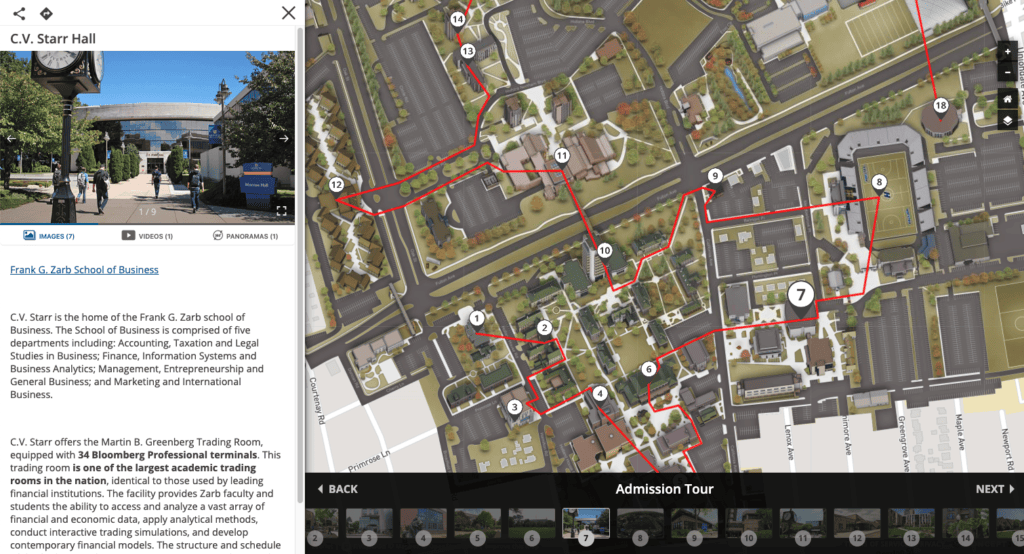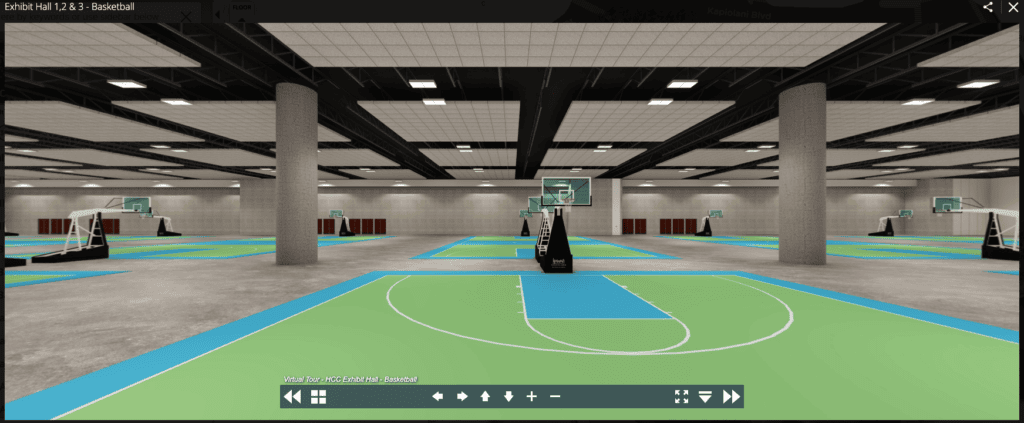We live in an increasingly connected world. And yet, the past few days and weeks have shown that more quickly than we might realize, virtual needs are expanding. Large and small events alike, from business conferences to campus admissions tours, are finding themselves in a position to look for alternatives that don’t involve face-to-face meetings.
The most obvious effect of the recent crisis has been an increased emphasis on remote work. Millions of Americans already work remotely at least during part of their workweek, and that number is expected to rise drastically in the near future.
A Vision of Virtual Events
Imagine hosting a trade show — except none of the vendors or visitors actually have to be in the same space. Instead, vendors build booths through virtual reality, able to be toured in real-time by anyone interested in their products. Video conferencing software enables sales conversations as well as the small talk and networking that make this type of event so successful in the real world.
Imagine a campus admissions event that takes place entirely online. Admissions hosts ‘walk’ through campus as part of a virtual tour, while video conferencing ‘rooms’ for various topics offer anything from information about specific majors to student panels about the experience on campus.

Imagine an open house for a healthcare organization that showcases doctors and medical facilities alike. Personnel talks through its expertise and experience, while patients leave their testimonials and make recommendations for a future visit — all on the screen, without any travel or physical interaction required.
We could keep going on these types of examples. That’s because, in our vision, virtual events can be just as effective as any physical experience. They just have to be built the right way. With the right technology and the right approach, none of the above is utopic. For your organization, it might just become a reality.
Technology Opportunities that Support Virtual Events in the Age of Restricted Travel
So far, we’ve dealt with hypotheticals. Now, let’s get specific. In this section, we’ll examine a few of the many technology opportunities that have increased the viability and success of virtual events on a number of levels.
Facebook Promotes Groups as Virtual Hangout Spaces
In this year’s Super Bowl, we witnessed a first. One of the world’s most prominent and influential companies purchased an ad during prime time. The purpose: to promote its Groups, long a little-used feature on the social media network that is (finally?) getting the attention it deserves.
You know Groups as a more intimate way to bring affinity groups together virtually. They exist in any space from politics to sports, for college class years all the way to individual neighborhoods. In total, more than 1.4 billion people participate in more than 10 million groups on the world’s biggest social network.

In the realm of virtual events, groups are relatively simplistic. They’re nothing more than a virtual community, dominated by the text-based and visually-enhanced post-and-comment technique that’s so common for frequent social media users.
The key to success is in some of the features Facebook now offers for Groups administrators:
- Connecting groups to pages to build clearer brand affiliations.
- Watch parties that allow for communal viewing (and reacting to) videos published to each of the group’s members.
- Learning Units that are designed to build collaborative educational modules for the group’s members.
- Group insights that offer analytics on usage rates and activity levels within each group.
In other words, and true to Facebook’s Super Bowl ad, groups build community. You can then leverage that community into a feeling and collaborative atmosphere that almost replicates the real-world experiences of business events.
Facebook Invests in VR Through Its Horizon Platform
Facebook purchased the virtual reality (VR) platform Oculus Rift a few years ago, and we’re finally beginning to get deeper insights into what, exactly, it plans to do with this futuristic technology. Enter Facebook Horizon which — according to its creators — is an:
expanding VR world where you can explore, play, and create in extraordinary ways. At Horizon, you’re not just discovering a new world, you are part of what makes it great.
That sounds fancy and exciting. But at first glance, it may seem more like a video game opportunity than a business possibility. It’s important to dig deeper, into its possibilities.
Horizon is, in fact, the first attempt by Facebook to connect social networking with environments that approximate the real world. In other words, it’s a fascinating example of what technology can do to replace business events like conferences and trade shows.
That’s especially true when considered together with the above-mentioned Groups feature. Facebook is testing, in real life, and on a grand scale, how it can make virtual experiences not just approximate, but match up to and potentially surpass their physical counterparts. Keep a close eye on these developments as opportunities for transforming the ways we think about business travel.
Starbucks Mixes VR With the Real World
So far, when you’ve heard about virtual reality, you’re likely thinking about entirely digital environments like the one described above. There are other opportunities as well, and Starbucks just became the latest major brand to demonstrate just how to mix virtual and real-life in so-called ‘augmented reality’ environments.
Augmented reality is based on the real world around the user, but builds a new, virtual layer into that reality. Furniture retailers like Amazon and IKEA have successfully used it to allow online shoppers a window into how a piece online would fit into their space at home. Now, Starbucks has built an AR game in which users can collect stars in their daily life in exchange for loyalty rewards.
Unlike the Facebook example above, this type of technology cannot entirely replace physical events. It can, however, enhance those events and build a bridge between the event itself and its digital context and atmosphere. It’s far from impossible to see trade show booths integrate the same technology to enhance their experience for better attraction and engagement.
Concept3D Offers Virtual Panoramas to Showcase Spaces
Finally, especially as it relates to replacing physical events, it’s crucial to keep an eye out for software that accurately models indoor spaces. Done correctly, such modeling helps in both planning space and showcasing it to future audiences.
Our 3D panorama feature is one of those examples, and it’s already used for space planning in the real world:
The Hawaii Convention Center and the Colorado Convention Center are among the first to integrate the 3D Panorama feature into their maps. The Hawaii Convention Center uses 3D Panoramas to showcase different rooms with a variety of layouts, such as banquet hall, classroom, or theater sets, offering event planners the ability to easily select the right approach for their event. The Hawaii Convention Center’s three large exhibit halls – that can be used for sporting events or tournaments – are now featured in 3D Panoramas for basketball, futsal, and volleyball setups.

Once again, it’s not difficult to see the potential use of this type of feature beyond simple planning. Building virtual models of real-world spaces means being able to create virtual events in that space that don’t differ much from their original counterparts. Especially when connected to some of the collaborative and virtual reality functionalities mentioned above, the 3D panorama could be a powerful way to build a beautiful virtual hosting spot for any type of business event.
5 Best Practices to Help Your Virtual Event Succeed
The above are just a few examples of the many ways in which technology has made physical events less necessary. More and more, we see the potential for virtual events popping up that reduces the need for travel and significantly increases flexibility. Of course, the virtual event still has to be done right, which is possible through these five best practices.
1. Don’t Try to Duplicate Physical Events
The evolution from the real world to virtual is not linear, but more complex. That means trying to simply duplicate a physical event in the digital realm is impossible. Instead, play to the unique needs and opportunity of the space, enabling more of the interactive and collaborative features that have sprung up in the recent past.
2. Build Your Events on Audience Pain Points
Why does your audience need an event like the one you’re offering to begin with? Knowing the answer to this question is key to building your virtual events.
Chances are that, compared to the originally-planned physical event, you’ll have to scale down on the complexity a bit. That’s actually a blessing in disguise because it enables you to focus only on what truly matters for your audience. Every piece of your planning, technology, and execution should be connected to those core pain points.
3. Offer Natural Integrations For Your Channels
Physical events are by nature isolated, reliant on face-to-face interactions above all else. That’s an opportunity in many cases but also leads to missed chances to build multi-channel integrations elsewhere.
Virtual events are more integrated. Through VR and AR, they can engage your audience’s senses, but they’re not limited to those channels. In fact, social media, email, and other pieces can build more well-rounded experiences specifically designed to get and keep your audience engaged.
4. Recreate the Feeling of Physical Events
While your event should not be identical or try to replicate physical events, they can still get to a similar spot by focusing on the ‘feeling’ of these events.
For instance, a digital admitted student day in higher education can still have chatrooms for individual departments to bring students into the fold. Similarly, trade show booths can simulate the experience of actually being at the booth through the right digital integrations and interaction abilities. Building on that feeling is vital to virtual event success.
5. Find the Right Partners
Finally, and as is the case with all types of events, the right partners can be key to the success (or failure) of your event. For physical trade shows, it’s the venue, the caterer, the sponsors, and others. For your virtual events, it’s the technology providers that ultimately virtually ‘host’ both space and activities.
Don’t go for vendors that simply sell you technology and throw you to the wolves. Instead, find partners that can build the event with you and aren’t afraid to integrate with other channels and solutions.
Are You Ready to Build Your Virtual Events as Future-Proof Opportunities?
Travel restrictions and home-based work require a significant adjustment in how we do business. However, that doesn’t mean events stop being a marketing or business opportunity. They merely shift to digital spaces where the opportunities still exist in slightly different variations.

